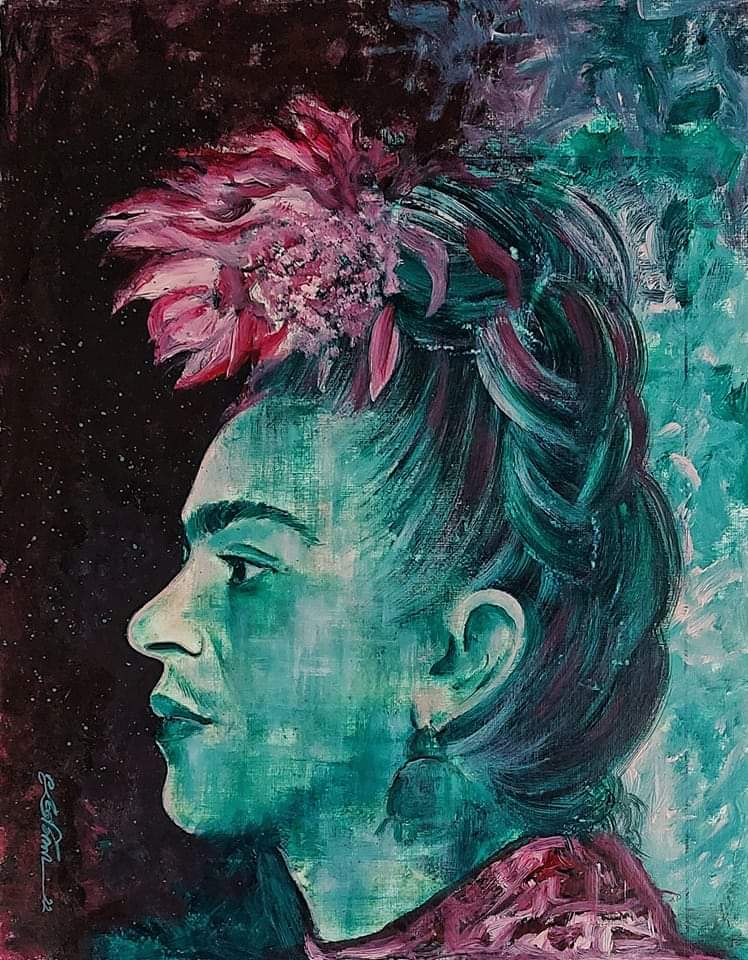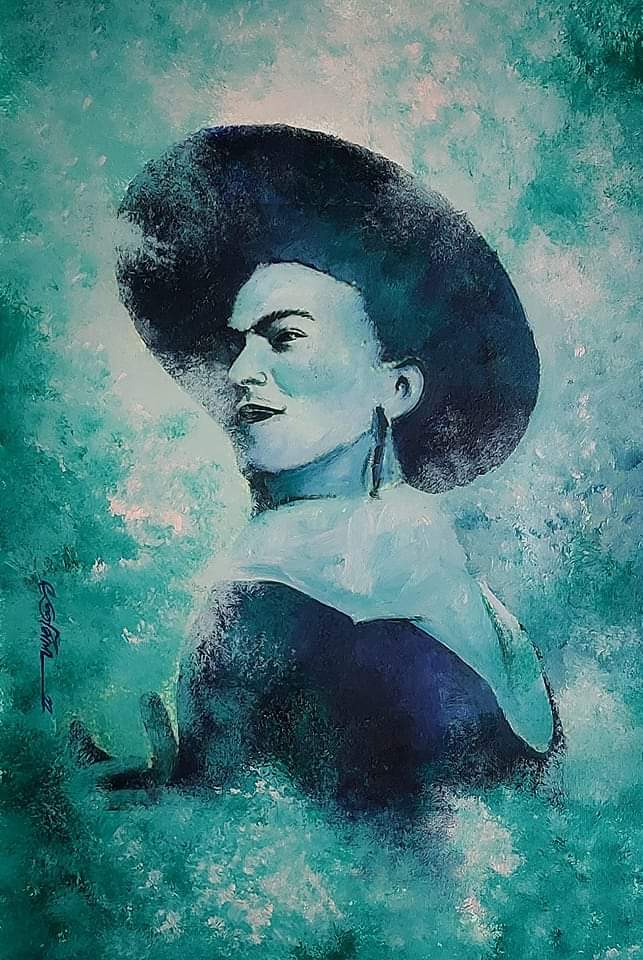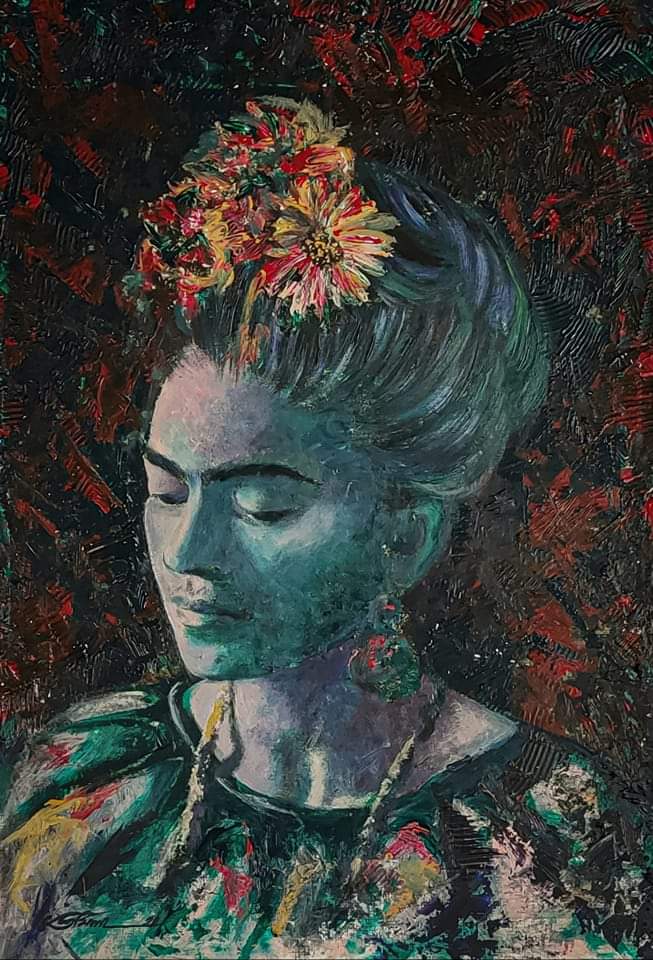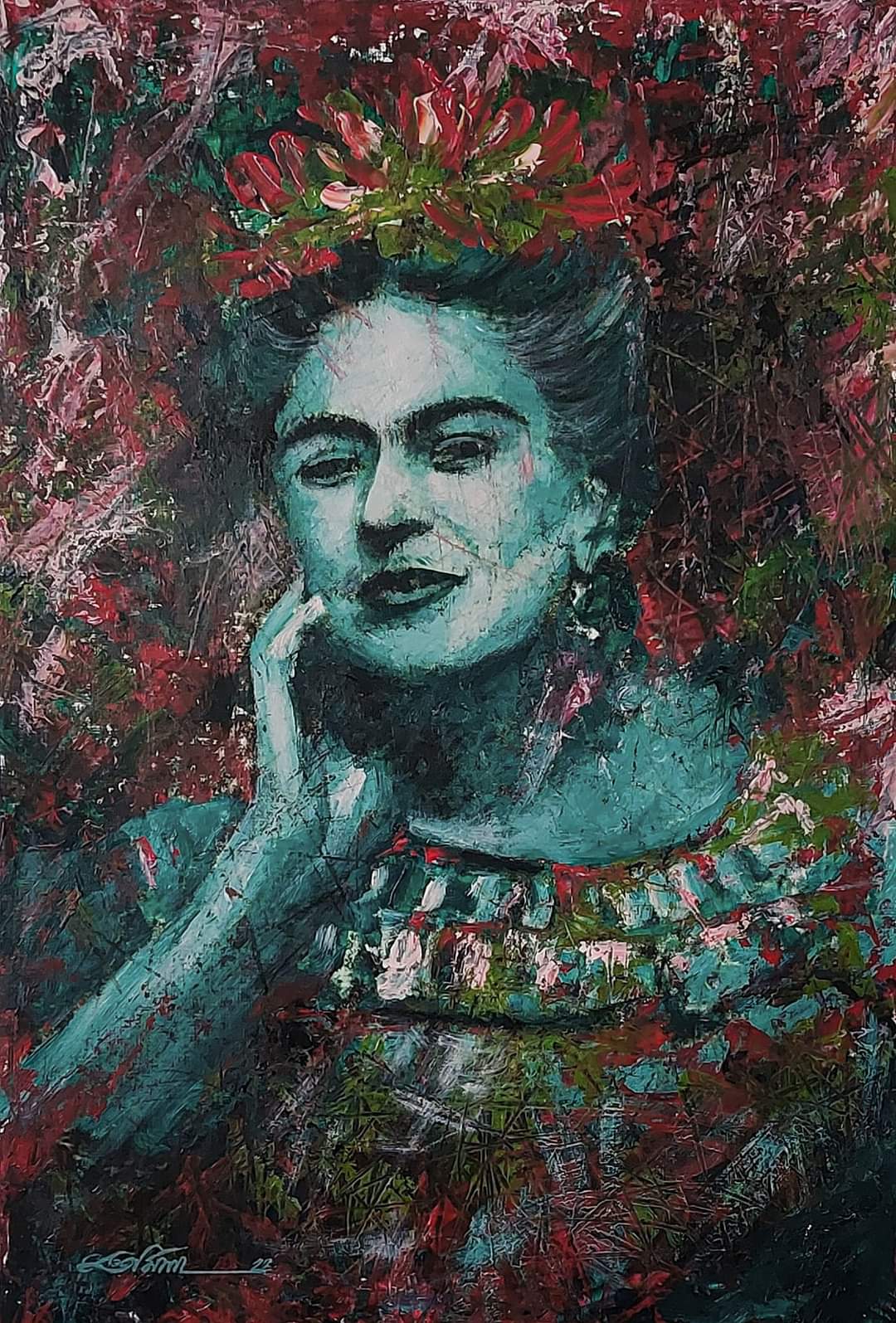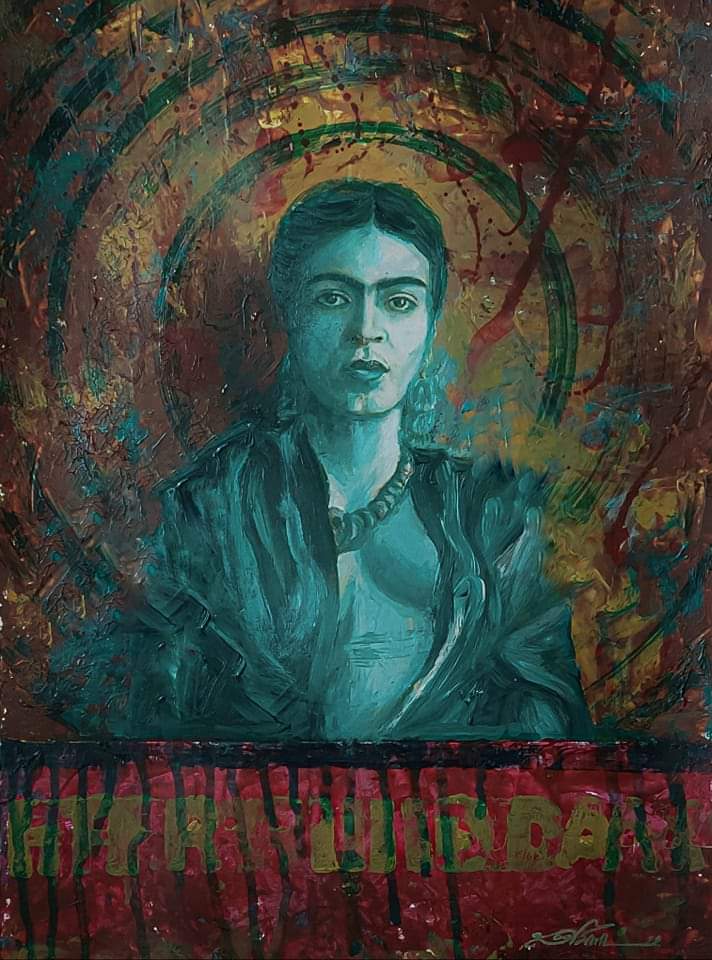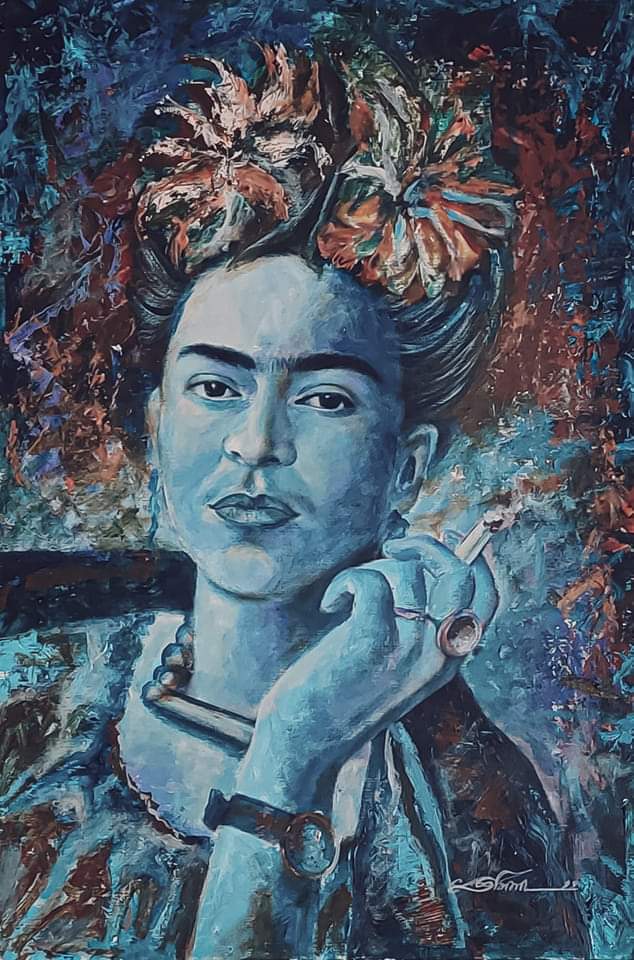To Frida, With Love.
“I am not sick. I am broken.But I am happy as long as I can paint.”~ Frida Kahlo
Frida Kahlo was an incredibly amazing woman. Her life was filled with physical as well as emotional pain. She endured more in her short life than most people will ever have to face. But she endured. She put her emotions into her painting, and as it were, she wore her heart on her canvas. Her work is a rare blend of true emotion, heartbreak, love, and life, as well as death.
This new series of Frida’s colourful portraits, capturing the multitude of emotions that shaped the artist, by Sharmila Paul is a special tribute to her contribution to the world of art. Created as an ode to Frida on her birthday month, Third Lane is honored to present, in this month’s special gallery, artist Sharmila Paul whose ongoing solo exhibition La Vie de Frida at @artsyinkolkata is already the talk of the town.
La Vie de Frida
Frida Kahlo lived most of her life in Mexico. Her mother was a Mexican catholic; her father a European atheist. She was beautiful, spirited, and bold. But most importantly, she was proud of her Mexican roots. Often dressing in bright, unique Tehuana costumes that became her signature style, clothing became an important part of how Frida chose to present and express herself. Her Mexican heritage and identity was fiercely reflected in her paintings.
Most of Frida’s paintings were self-portraits. She said, “I paint self-portraits because I am the person I know best. I paint my own reality. The only thing I know is that I paint because I need to, and I paint whatever passes through my head without any other considerations.” Her paintings, like Tori Amos’s music, are very open and honest. They reflect her emotions, the events in her life, changes in her feelings – whether good or bad. She recorded her life in paint. Her imagery and style were very original, dramatic, and courageous. Her husband, the famous Mexican muralist Diego Rivera, said: “Frida is the only example in the history of art of an artist who tore open her chest and heart to reveal the biological truth of her feelings. The only woman who has expressed in her work an art of the feelings, functions, and creative power of woman.”
Frida married Diego Rivera, a union which, according to her parents, was like that between an elephant and a dove. Diego was fat, ugly, and much older than Frida, but she loved and admired him. However, he frequently had affairs with other women, including Frida’s sister. This caused Frida a lot of pain, but she retaliated: she had affairs of her own, with men and with women. The most notable of her lovers was Leon Trotsky, the great Russian revolutionary who spent time with Frida and Diego in Mexico while in exile. Frida had a seductive effect on many people and charmed everyone. People loved her beauty, personality, and talent. But interestingly, she was also known for her crass sense of humor, often fond of telling dirty jokes and cussing (which she got away with at high-society parties in America by pretending she didn’t know what the bad words meant in English).
Probably the most influential event in Frida’s life was the most tragic one as well. When she was eighteen, she was in a bus accident that marred her for life. Her body was almost destroyed. Both her spinal column and pelvis were broken in three places. She was skewered by a metal handrail that entered her hip and exited through her vagina. The doctors did not expect her to live. It was during the time after this accident, while bed-ridden, that Frida began to paint. Painting not only passed the time, but became an essential outlet for her emotionally and spiritually. Because of the accident, Frida was never able to have children. She had several miscarriages, which caused her to be horribly depressed (see Henry Ford Hospital, below). She purged her emotions on her canvas. Her paintings are often violent-looking, bloody, and severe. But they simply represent the truth of what was happening to her.
Since she could not be a mother, Frida lavished her attention on her many pets: dogs, cats, monkeys, and birds, as well as on her plants. Her plants and animals often are featured in her self-portraits, taking the place of children. Frida longed to be part of the flow of the universe, the connectedness of life.
In the 1940s, even as she divorced and then re-married Diego, going through a tumultuous personal journey, her health worsened. She had numerous operations (about 35), had to wear a steel corset to support her spinal column, and was frequently in the hospital. Months were spent in bed, but she continued to paint. She got progressively worse in the 1950s and was hospitalized for a year; had more operations and her leg had to be amputated. Of this she wrote in her diary: “Feet, what do I need them for, if I have wings to fly?”
Yet the pain was becoming unbearable and she wanted to die. She was preoccupied with death. Her paintings reflected her depression, often including skeletons and other grim images. She eventually died on July 13, 1954.
Frida lived her life to the fullest, despite immense pain, handicaps, and suffering. She had a gift for communicating her emotions to the world through painting. Her paintings are beautiful, often heartbreaking works, and are uniquely her style. Yet she is an amazing woman in her own right, for what she has endured, how she persevered, and how she was an inspiration and example of strength.

